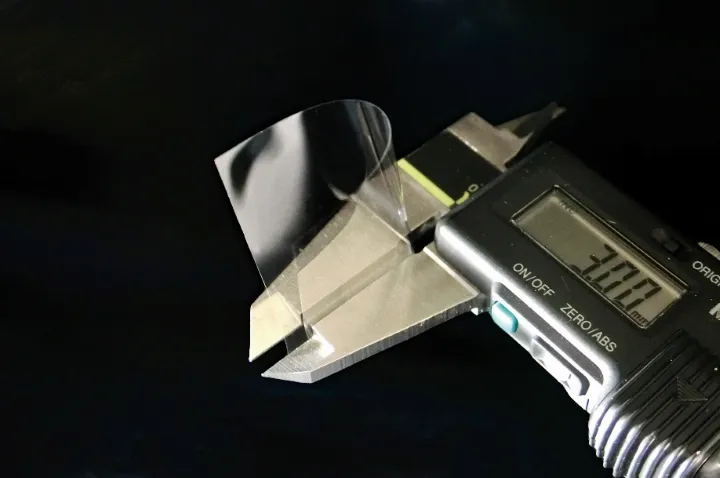Ultra-thin Glass: G-Leaf™
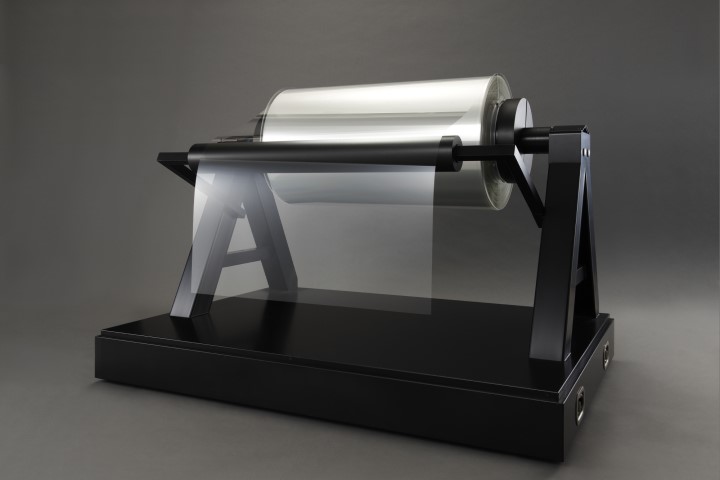
This bendable glass achieves flexibility by being ultra-thin. With a thickness of 200µm or less, it is exceptionally lightweight, and at under 100µm, it can be rolled up, enabling roll-to-roll processing for improved delivery efficiency. It maintains the excellent properties of glass, such as heat resistance and gas barrier properties, making it a promising material for the development of new devices that were previously unachievable.
Applications
-
Flexible displays
-
Solar cells (Perovskite solar cells, solar cells on satellites, etc.)
-
Wearable devices
-
OLED displays
-
Touch panels
-
Electronic paper


Features
-
Thin and bendable
Flexible and bendable -
Lightweight
Very thin and lightweight -
Glass’s inherent characteristics
Has excellent features inherent to glass, such as heat resistance and gas barrier properties -
Surface smoothness
Very smooth and has high surface smoothness even without polishing -
Green glass
Environmentally friendly glass that does not contain the environmentally hazardous substances such as As and Sb
Specifications
Flexibility
The ultra-thin thickness of the glass minimizes the tensile stress caused by bending. As a result, even with a reduced bending radius, the glass remains intact without fracturing, providing exceptional flexibility.
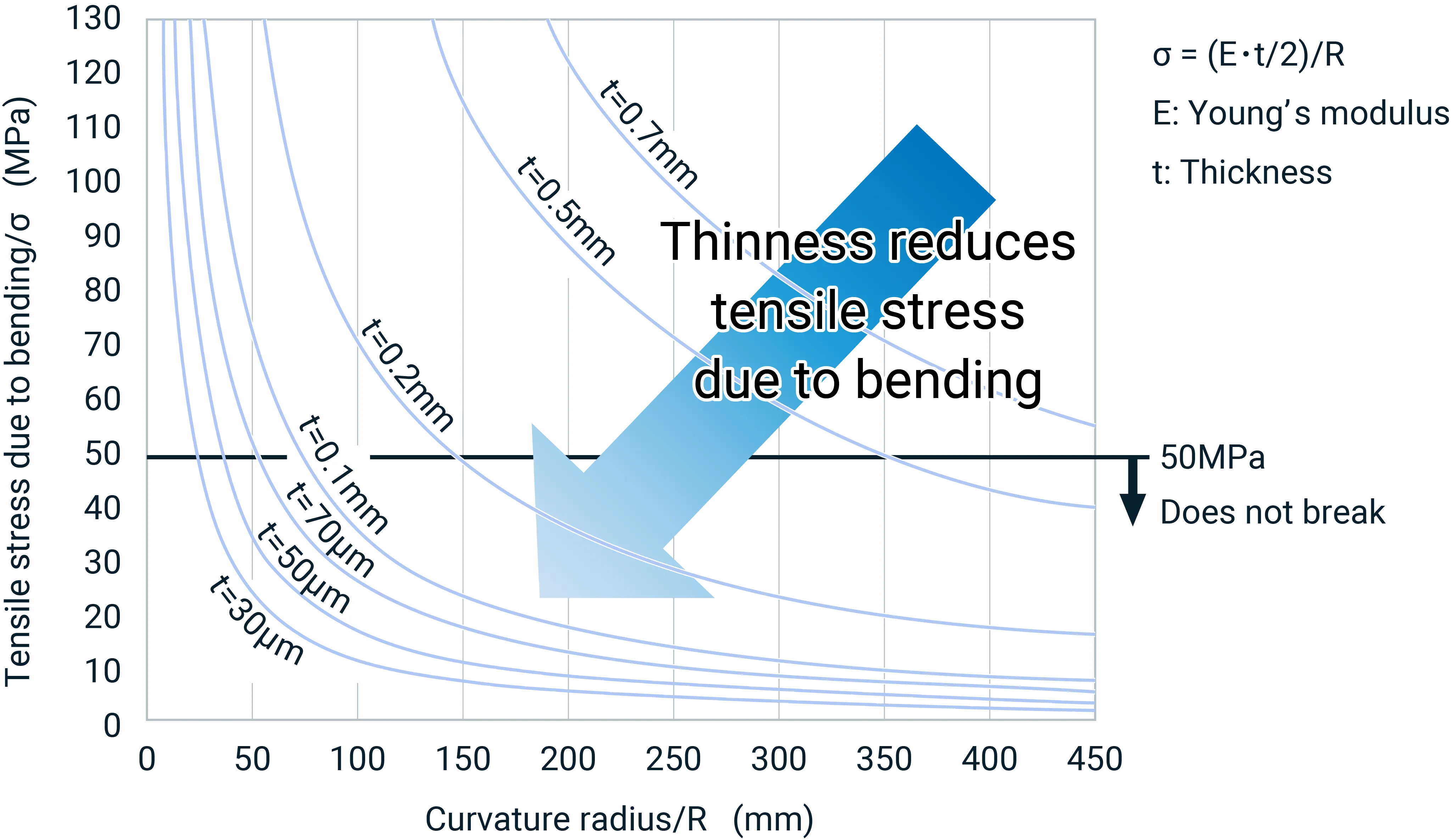
Gas Barrier Properties
Compared to resin, it allows little or no passage of water vapor, oxygen, or other gases.
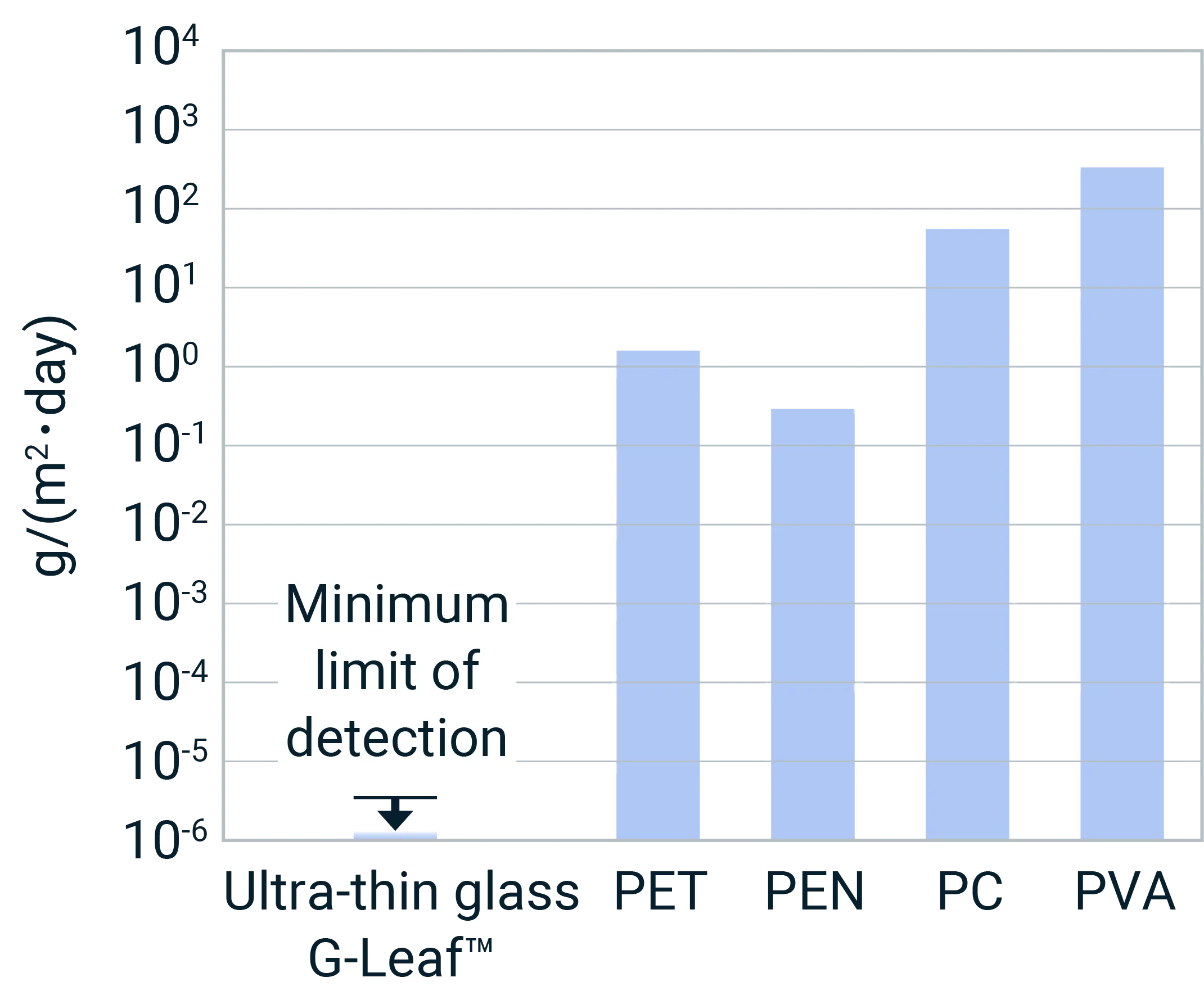
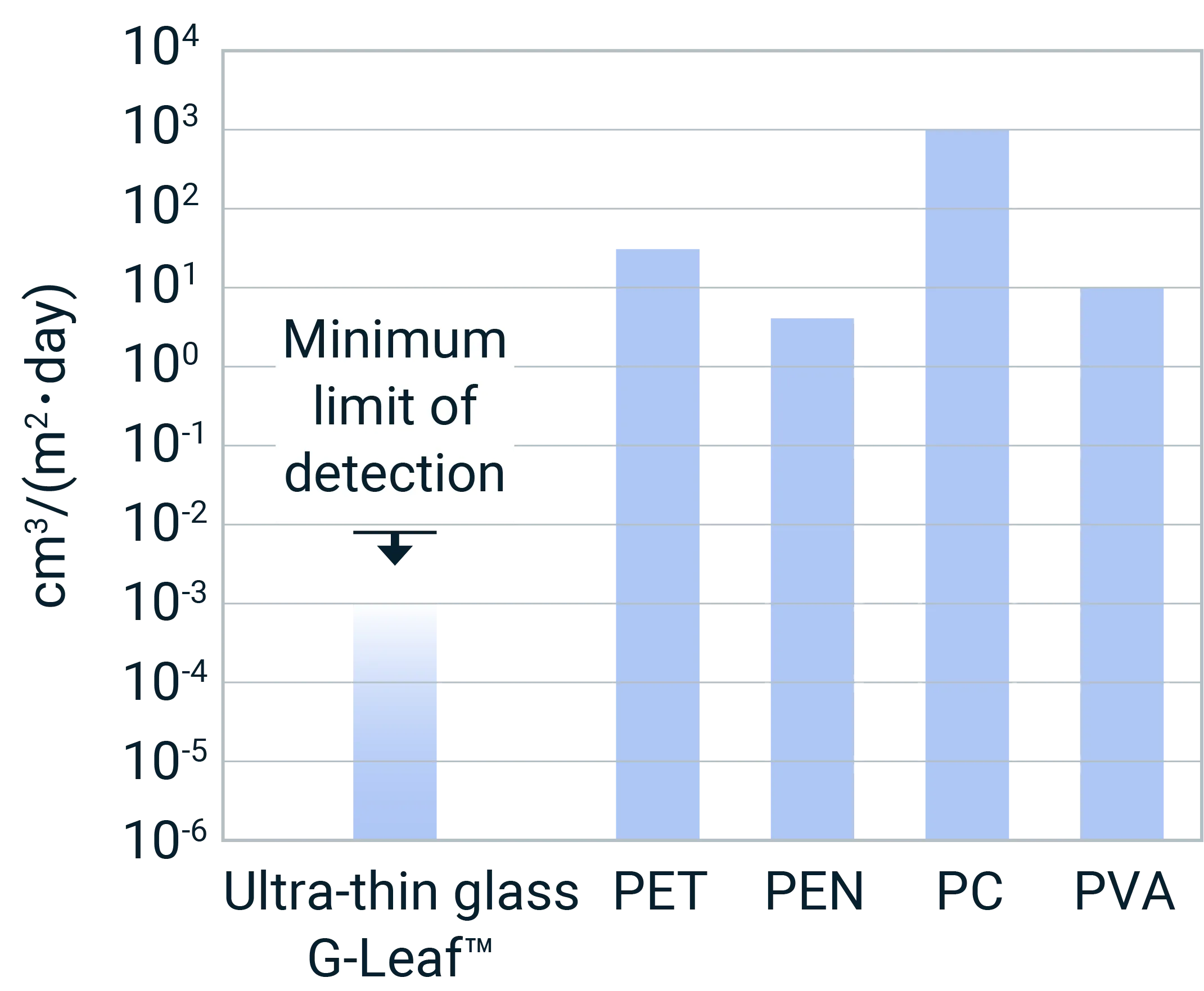
Surface Smoothness
It has an exceptionally smooth surface, with high surface smoothness even without the need for polishing.
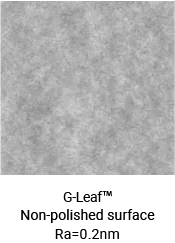
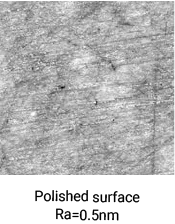
Transmittance
It is transparent, offering high light transmittance.
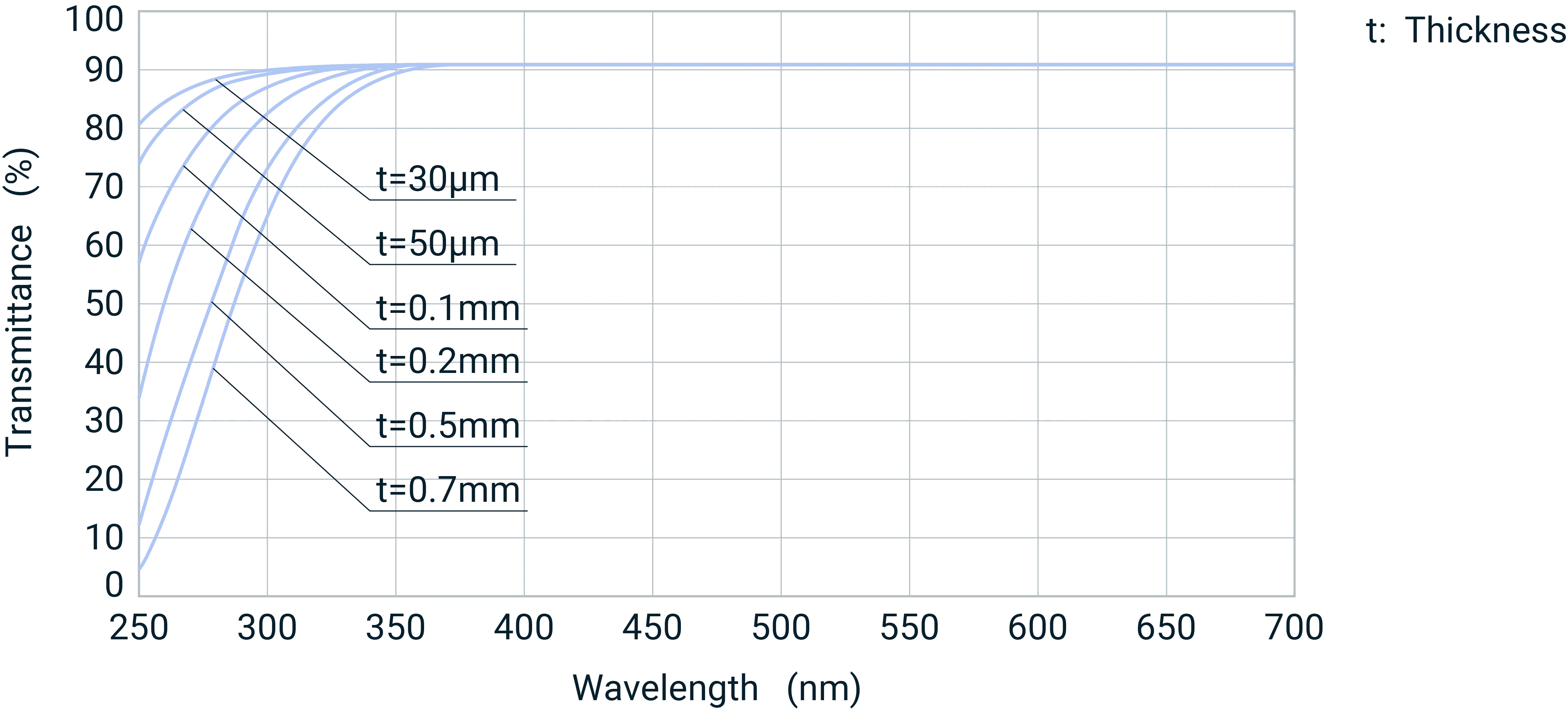
Properties
| Properties/Glass code | |||
|---|---|---|---|
| Density | ×103kg/m3 | 2.46 | |
| Strain point | ℃ | 650 | |
| Annealing point | ℃ | 705 | |
| Softening point | ℃ | 940 | |
| Coefficient of thermal expansion | 30~380℃ | ×10-7/K | 38 |
| Young’s modulus | GPa | 73 | |
| Poisson’s ratio | 0.2 | ||
| Vickers hardness | Hv | 600 | |
| Volume resistivity Logρ | 350℃ | Ω・cm | 12.0 |
| Dielectric constant | 1MHz, 25℃ | 5.3 | |
| tanδ | 1MHz, 25℃ | 0.001 | |
| Transmittance | λ=550nm | % | 92 |
| Refractive index (nd) | λ=587.6nm | 1.52 | |
| Chemical resistance | 10% HCl(80℃-60min) | No surface alteration | |
| 63BHF(20℃-3min) | No surface alteration | ||
| Alkali oxide content | wt% | 0.1 or less | |
| As, Sb content | wt% | Not present (less than 0.1) | |
Event Information
We will be exhibiting at the following events.

Need More Details? Connect with Us!
Related Products
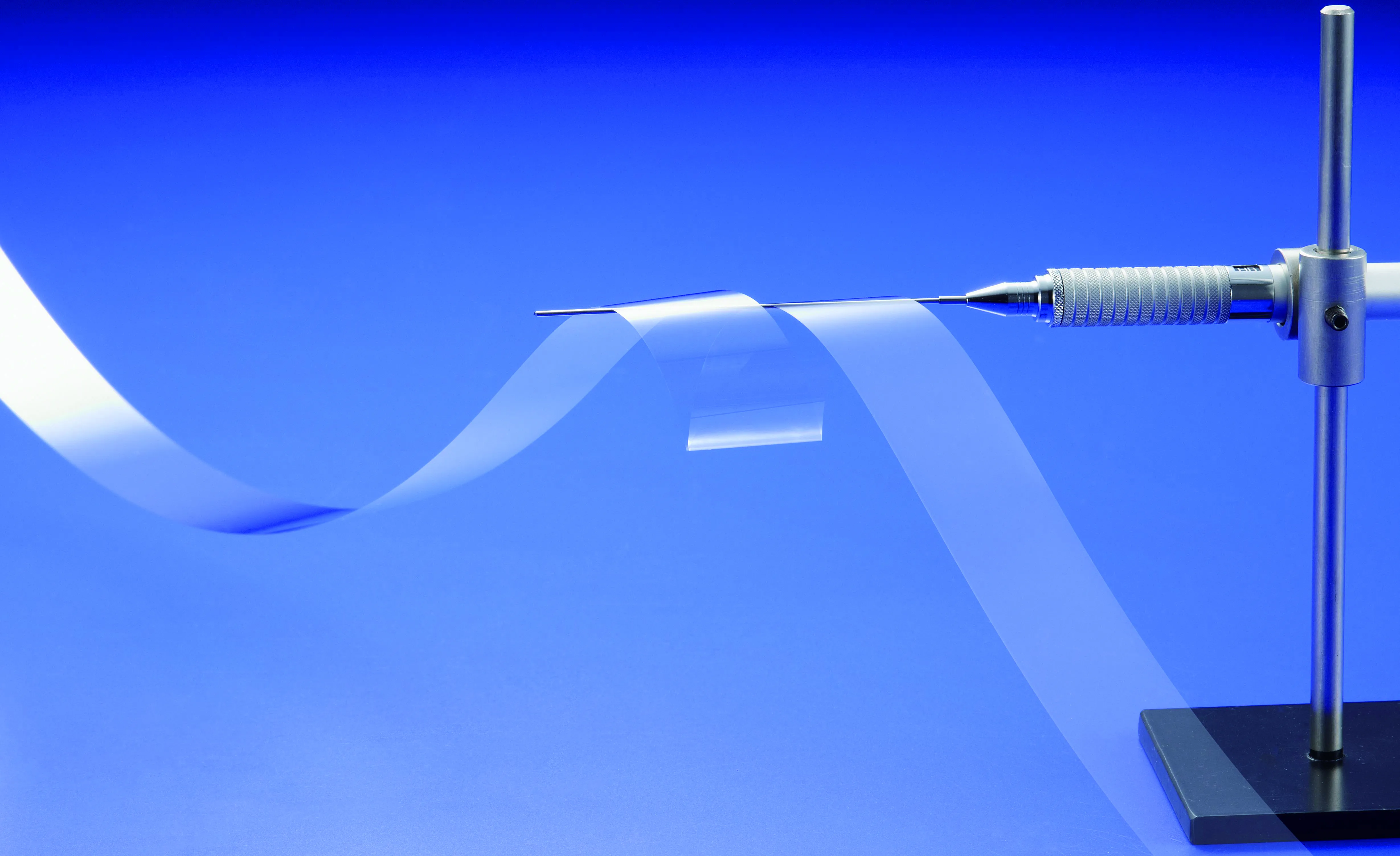
Glass-ribbon
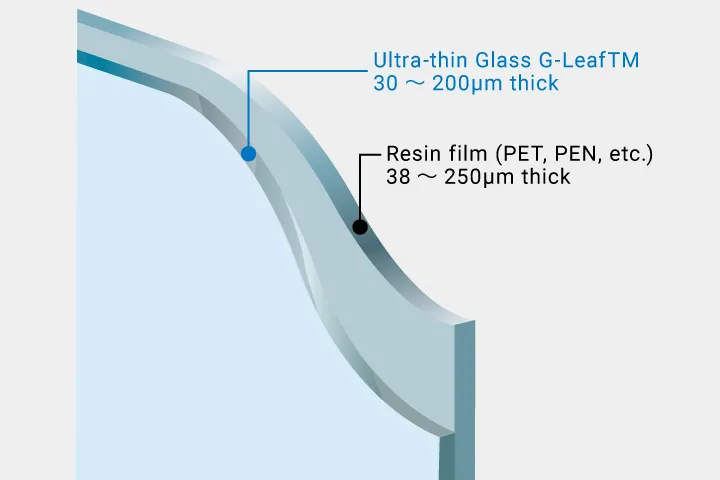
Ultra-thin Glass Laminated on Resin: Lamion™ [Flexible Type]
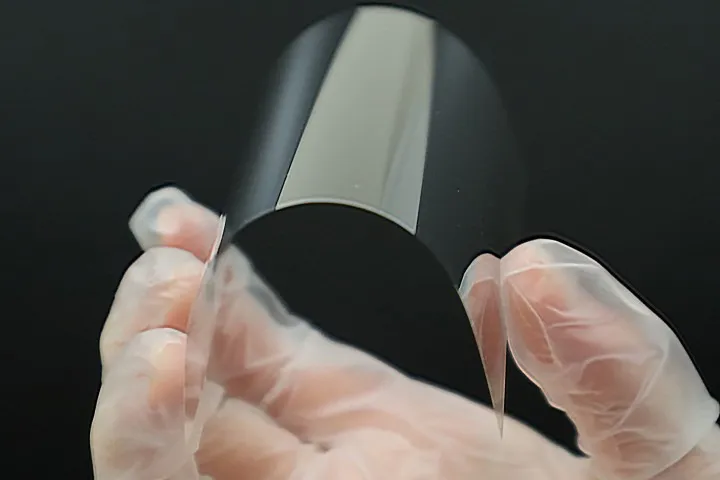
UV Shielding Ultra-thin Glass: BDX-2
